Wairarapa Service Gives Hamilton Clues
As question marks arise over the proposed Waikato to Auckland train service, the Wairarapa to Wellington train service gives us an insight into how satellite town train travel could be extended elsewhere.
More than 700 responses to a survey of Wairarapa train passengers and almost 400 submissions are being consdered as part of a review of Wairarapa public transport services and they provide some nuggets that give us some clues about what might work for Hamilton.
Wairarapa commuters want more frequent train services and a solution to having to stand for much of the journey.
90% say their main reason for taking the train to Wellington is for work. Would this be the same if there was a Hamilton to Auckland service?
Greater Wellington Regional Council contracts Tranz Metro to provide the service between Masterton and Wellington: This consists of
- Three peak-time services in each direction each week-day
- Two off-peak services in each direction on weekdays and at weekends
- A late night Friday service in each direction.
The trains carry about 690,000 passengers a year. Greater Wellington spends about $25m a year to subsidise train services in the Wellington region. Ratepayers contribute 40% of this and the New Zealand Transport Agency contributes the balance. Wairarapa ratepayers contribute about $345,000 a year to subsidise the Wairarapa trains
A one way Masterton to Wellington ticket is $17 adult $8.50 child. A 10-trip is $130 for an adult, monthly $390.
The 6.48am departure from Masterton gets you to Wellington at 8.29am.
Peter Glensor, Chair of Greater Wellington’s Economic Wellbeing Committee, says key concerns about Wairarapa train services included a need for more capacity on some peak hour services, a desire for more off peak services during the week and at the weekends and more convenient peak hour evening departure times.
“Since the new Wairarapa trains were introduced in 2007, passenger numbers have been increasing steadily so there are now not enough seats on some services.
“We do have a possible solution to this, which would involve converting some carriages that are currently being used on the Hutt Valley line for use on the Wairarapa line when we get enough of the new Matangi trains into service. However the carriages would need to have toilets installed and some other work, for which funding is not currently available.
“A small surcharge on Wairarapa fares to fund these costs is one possibility that is being considered.
“The review is also investigating an off-peak and weekend shuttle train service between Masterton and Upper Hutt which would link with the electric trains at Upper Hutt. While this sounds simple enough it’s actually not because the Wairarapa trains cannot turn around at Upper Hutt, so a locomotive may be needed at each end of the train.”
What they want is shown below:
Other suggestions:
Some of the insights from the survey:
- 85% of Wairarapa people using the train are going to Wellington with 5% to Upper Hutt, 6% to Waterloo and 4% to petone
- 21% - described as a significant number - of passengers travelling to Masterton or Carterton are boarding in the Hutt Valley
- The main boarding point for the morning trains is Featherston (33%), masterton (28%), Carterton (25%) and Woodside (12%)
- 68% of Wairarapa passengers drive to the station, 11% of those getting fropped off there.
- 81% take the train at least 4 days a week
- A third would pay higher fares for service improvements -10% would pay an extra dollar, 17% $2,
And preferred times of travel is relevant in view of the Hamilton proposal:
Cr Glensor said feedback on Wairarapa bus services was mainly about the need for better connections between some of the bus services and better connections between buses and trains. “In particular, many people have asked for better connections between Greytown and Woodside Station.
A fourth town route in Masterton, covering the north eastern area, is also being investigated.
“Our consultant is working closely with the KiwiRail and Tranzit Coachlines, the bus operator, on some options and solutions to the issues that have been raised. Any changes will be subject to available funding and this may mean the cutting of some poorly used services to pay for services which more people want.”

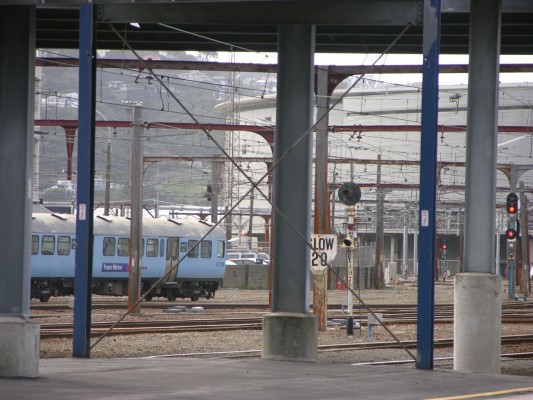
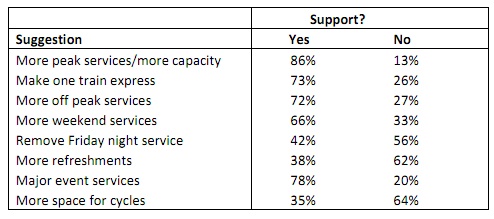
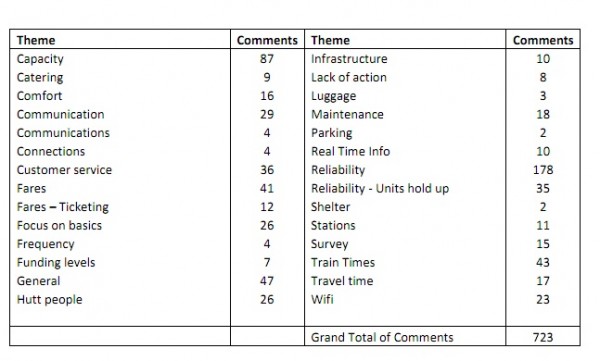

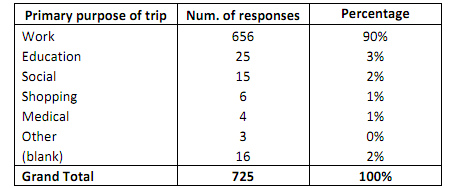
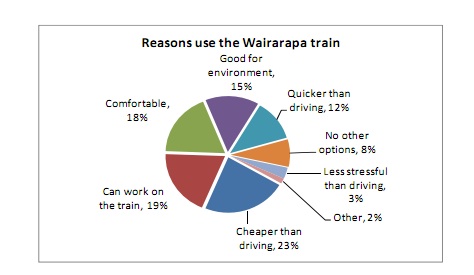
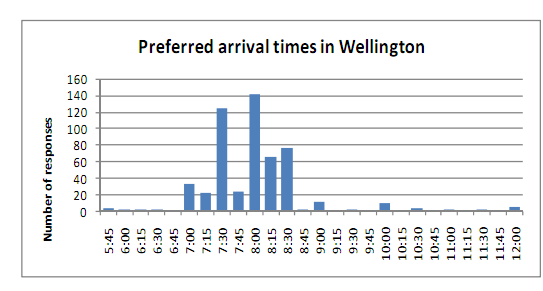
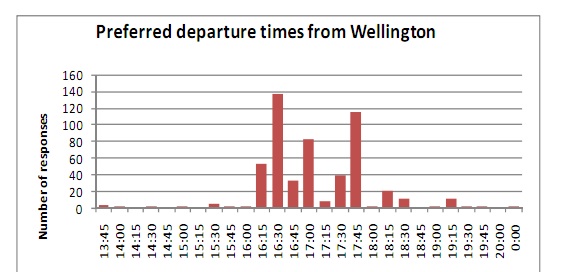










13 Comments
Service levels on the Wairarapa are indeed high for the low population, but it does show people will use the train.
Contrast the service levels (5 or 6 a day each way) with the Capital Connection that has 1 each way a weekday. And the towns on the west side of the Tararuas are much larger.
It would probably make more sense to aid the Capital Connection and Hamilton-Auckland routes rather than improve the already really good Wairarapa service.
But let’s face reality, all the NZTA money that should be spent on the three routes is going to be spent on the Maniac Motorways, so they’re going to face the reality of living under the idiot yoke of National rather than get service improvements.
One point that hasn’t been made is the difference in the quality of the roads between Wellington and Palmerston North, and the road to the Wairarapa. The road over Rimutaka Hill isn’t exactly a good drive in good weather, never mind the fact the hill often closes in poor Weather. It’s more convenient to take the train under the hill, rather than brave the windy, steep, cliff-side road.
In relation to Hamilton/Auckland - I guess this raises the point, how do we ensure the train service can compete with what will be a high speed motorway all the way from Cambridge into Auckland central?
James F - “high speed motorway t o central Auckland”? Check the Auckland section of that motorway any weekday morning, on a rainy day or before a long weekend…. Let me know if it is high speed.
: )
That’s true, but that’s part of a normal commuting process anyway. People have come to expect traffic.
“That’s true, but that’s part of a normal commuting process anyway. People have come to expect traffic.”
So what? IF one can provide a reasonably regular and quick train alternative, they will soon come to realise that being stuck in traffic WASNT their most favourite part of the day, even if they got used to it…
Also, the reasons cited for use of the train are more manifold than just time, quite interesting actually
The rail service has had a significant impact on the attraction of living in the Wairarapa. Many people have decided to move over there into lifestyle blocks, where land is cheaper.
Any Hamilton-Auckland service would have to lead to improved town planning around the Waikato to reduce the impact on the rural industry.
Imgolfson, my issue is - how quick would the service be? it’s nearing the 2 hour mark to do the 90km from Levin to Wellington. Track speeds in NZ aren’t particularly competitive. So what will set the rail apart, and make it a viable option?
@James F
Levin - Wellington on the CC is just under 1hr30. Palmy - Wellington is 2hr5.
I find it funny that the Capital connection makes a profit, though the Wairarapa service, using a smaller loco and with more passengers, needs a subsidy - I smell a rat! ( though potentially paying off the $28 mil cost for the 18 new carriages) .
Really makes you wonder why Auckland doesn’t have a similar train to Hamilton though.
Tim,
When you run just one service per day you chose the most profitable time to run.
When you run many services per day not all make a profit, but they provide the “network effect” and offer many alternatives to driving. Overall, all the services may make a financial loss, but the benefits to the community out weight that cost.
This is where the Hamilton - AKL services will be run along the lines of the Wairarapa services, to profit more benefits to the community.
@AKT - Auckland-Hamilton would be at least as popular as the Wairarapa trains, if, like the Wairarapa, there was a mountain range along the way. That’s the #1 reason the Wairarapa trains are so popular. If the mountain range wasn’t there, or if there was a road tunnel, I doubt Masterton would have the trains it has today.
@Jon R - You write “When you run many services per day not all make a profit, but they provide the “network effect” and offer many alternatives to driving”
Since it appears the proposal is only for 2 or 3 trains each way, and since you insinuate that 1 or 2 of them will make a loss, then by implication you are admitting the network effect will still result in low patronage.
Continuing low patronage at great financial cost to the public is in nobody’s interests, what is the goal here? If the goal is to build patronage to the point where the railcar is full, then the subsidy will no longer be required.
So a two year subsidy to kick start, then continue unsubsidized if it’s popular, or pull the plug if it’s not.
Or you could do the 2 year trial, if proved successful as indicated by the demand from communities along the line, then invest in new rolling stock. Perhaps that means new railcars, or converting BR cars for it.
Or it could be like in Auckland, additional services are offered. Potential options are endless once we are at that point.
Trains need to be quicker! If the Wairarapa to Wellington train could go under 1 hour then uptake woud be massive. Compare NZ public transport to services to Europe and Asia and we’re an absolute joke.